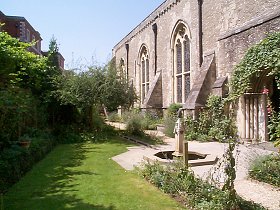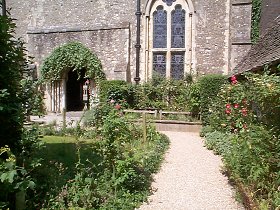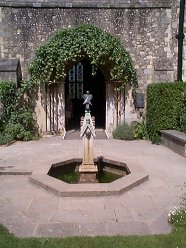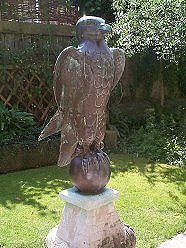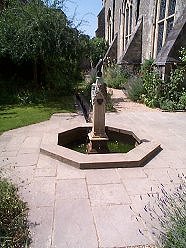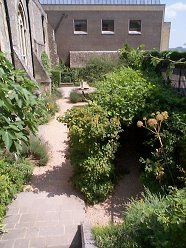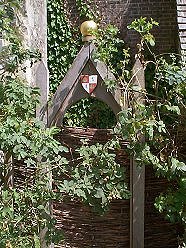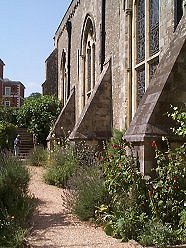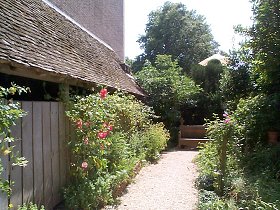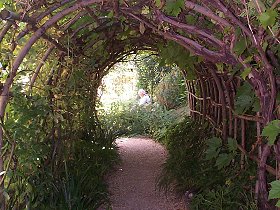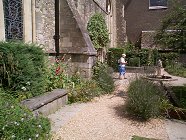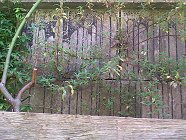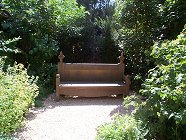|
Set in a small secluded area behind the Great Hall, Queen Eleanor’s Garden is a modern reconstruction of a 13th Century garden. Opened in
July 1986 by Her Majesty the Queen Mother, it may be accessed either through the Great Hall itself, or via a set of steps to the rear.
Named after Eleanor of Provence, Henry 111īs Queen, the garden uses plants and materials
that would have been familiar to gardeners of that period. The lean-to in the background is roofed with split oak shingles. The pergola is formed of hazel (Albeit with a modern supporting steel frame, for durability). Turf
walls and hedges of Bay surround a herb garden, and a stone seat is conveniently placed so one can sit and admire the fine Purbeck stone water feature.
All the stonework, and the fountain, were crafted by the Masons of
Vokes and Beck under the leadership of Mr Wheeble. The fountain is formed in sections, not because of it’s intricacy or for ease of transport and assembly, but because the best quality Purbeck stone used in it’s
construction is only found in one seam. The thickness of this seam determined the size of the blocks that could be quarried.
|
